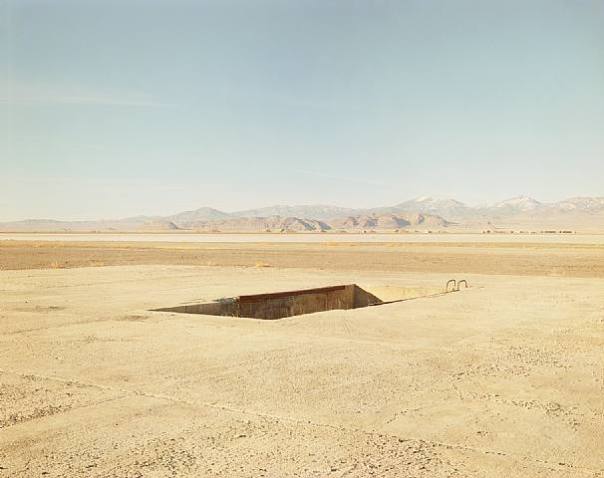Or, more accurately, Easter in Death Valley National Park, because we spent most of the time outside of the Valley itself. Or, even more accurately, we spent most of the time near a graben known as Death Valley. A valley is eroded by water, like the Mississippi Valley or the Ohio Valley; a graben is a low area, formed by a chunk of the earth’s plate, that has dropped. Because of its plant life, Death Valley is considered in the Mojave Desert – show above as the little blue line in the north western part of the Mojave – but, geologically, it is in the Basin and Range Province.
The Basin and Range Province is an area where the land is being pulled apart in an east-west direction. In other words, each year Reno, in the western part of the province, is being slowly pulled further away from Salt Lake City just east of the province. Not each year, actually, but in fits and jumps over a period of millions of years. As the land is pulled apart, it is split into blocks, one side tilting up and the other side tilting down. The up sides are mountains and the downsides are graben. The deepest graben is Death Valley.
Along with Gina Matesic and Courtney Gonzalez, Michele and I drove south and then east and then north on Good Friday and camped just off of the Big Four Mine Road in the Panamint Valley (another graben). The night was chilly but we we woke to clear skies and no wind on Holy Saturday.
The plan was for Gina, Courtney, and Michele to spend the day walking to the Panamint dunes while I went up to the end of the road and then hike the canyon behind the Big Four Mine (a lead and Silver mine that was last mined in 1952). Their hike would be somewhere between seven and eight miles with a elevation gain of about 1,000 feet and my hike would be much shorter with a bigger elevation gain.
On my way up the canyon, I had passed the Big Four Mine which, apparently, had its heaviest usage during WWII when it was renamed the War Eagle Mine. According to a report done for the BLM – Bureau of Land Management for those of you who haven’t spent much time in the wilderness areas of the west – 370 tons of ore was extracted from the war Eagle between 1944 and 1945 averaging 16.6 percent lead, 12.5 percent zinc and 2.6 ounces of silver per ton. If my math is right, that is about $160,000 at today’s prices, for two years of hard work – in a very inhospitable place – for more than a few men and enough equipment to haul it 150 miles across the desert. It doesn’t seem like as much fun as we were having.
On my way back down the canyon, I stopped to wander around the mine site. There wasn’t much there and I was struck by how unlevel everything was. Just walking around was a balancing act.
Then it was time to ogle the local cacti, check out the view and drive back to meet Gina, Courtney, and Michele, and on to downtown Death Valley.














































